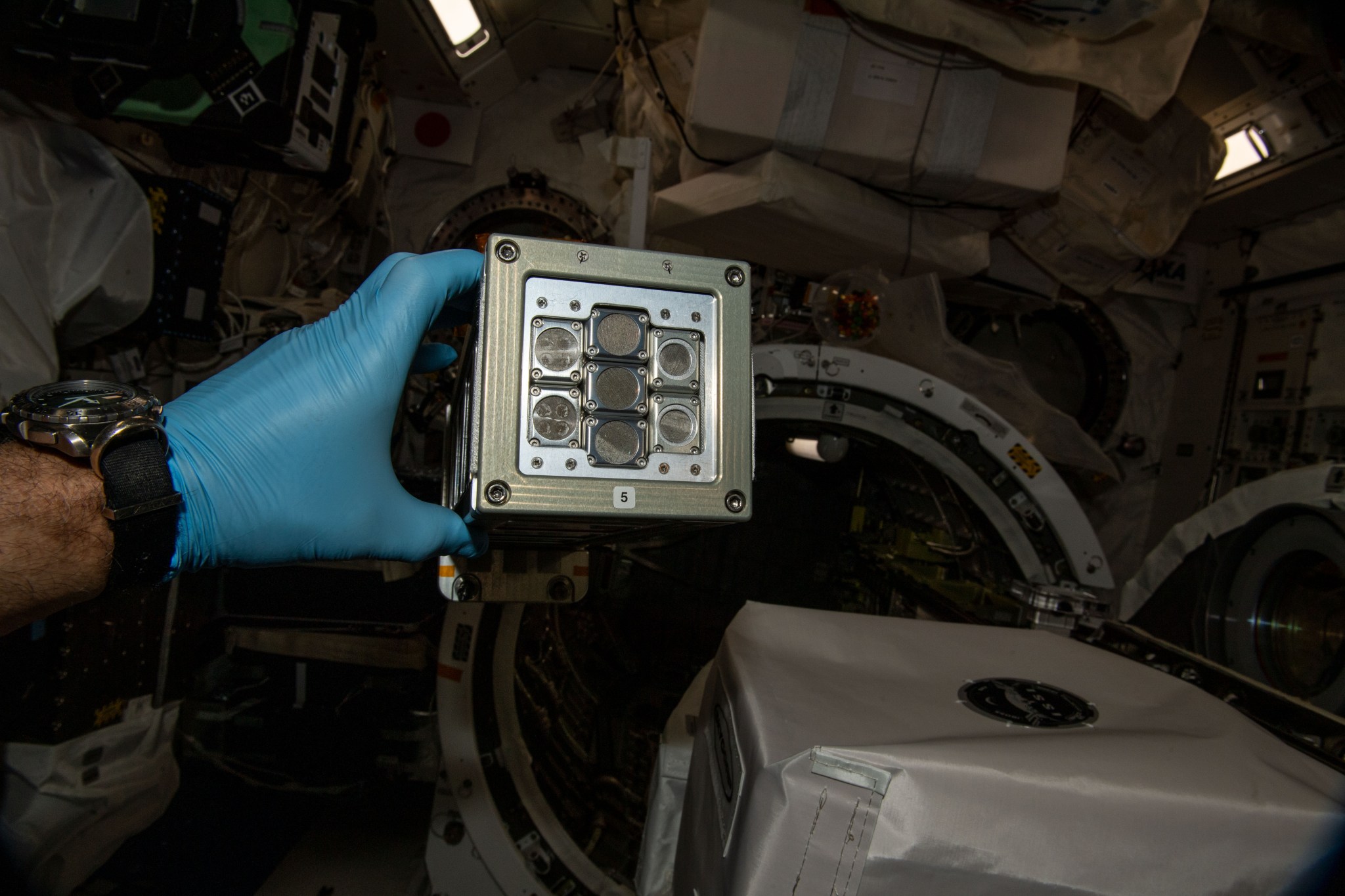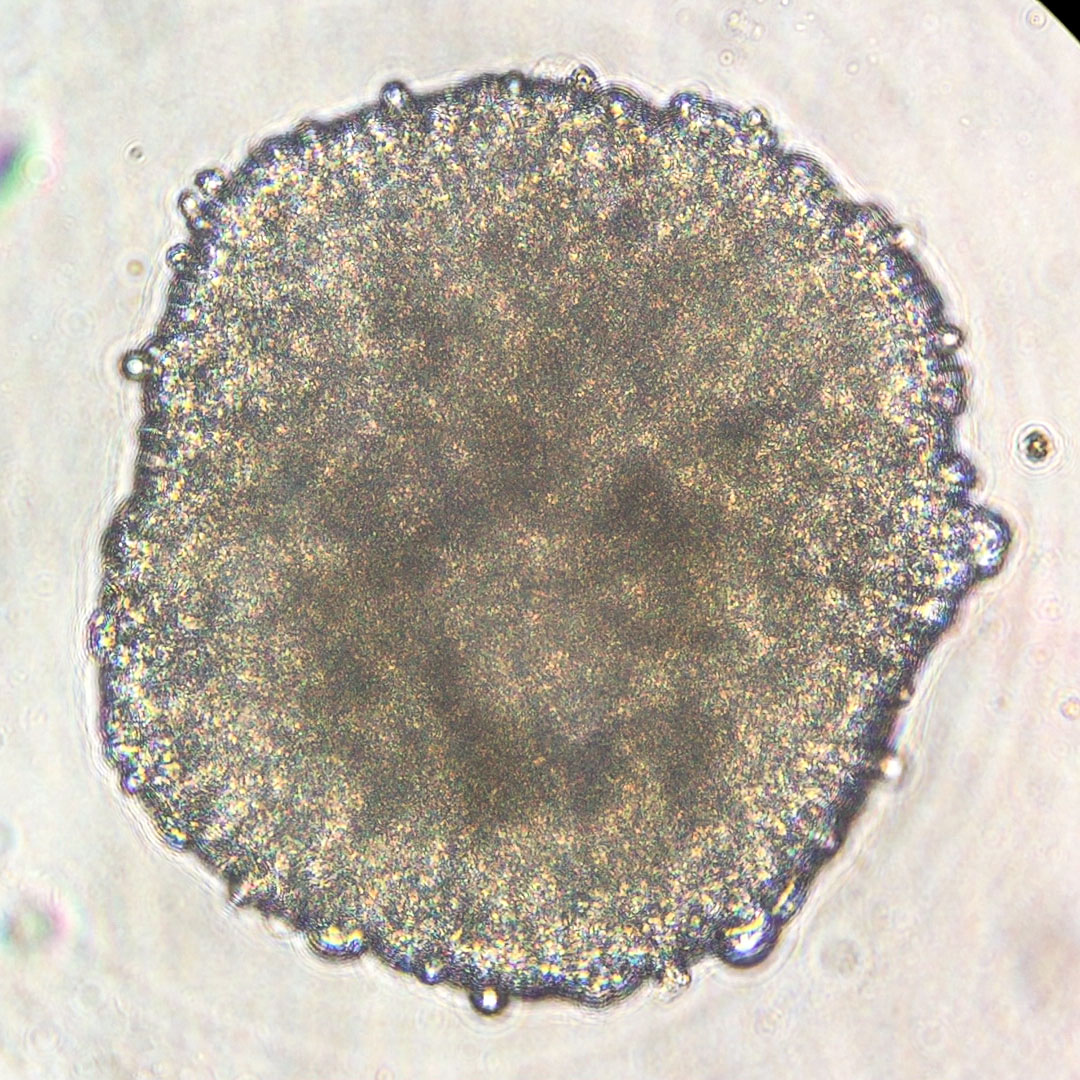NASA’s 27th SpaceX commercial resupply services (CRS) mission is scheduled to launch to the International Space Station from the agency’s Kennedy Space Center in Florida in March. The scientific experiments and technology demonstrations carried by the uncrewed Dragon spacecraft examine how the heart changes in space, test a student-designed camera mount, compare surfaces that control biofilm formation, and more.
Download high-resolution photos and videos of the research mentioned in this article.
Here are details on some of the research launching to the orbiting lab:
A Helping Hand for Hearts
The Tissue Chips in Space program, a collaboration between the National Center for Translational Sciences at the National Institutes of Health and the ISS National Lab, is sending up its final two studies. Both are second flights of heart-related investigations that use tissue chips, small devices that mimic functions of human organs.
Cardinal Heart 2.0 builds on the Cardinal Heart investigation. That study, according to Dilip Thomas, a post-doctoral researcher at the Stanford Cardiovascular Institute, affirmed the hypothesis that microgravity can adversely influence engineered heart muscle tissues. “This second study aims to test whether clinically approved drugs mitigate the signs of abnormal processes seen from the first flight,” he says.
Principal Investigator Joseph Wu, director of the institute, says the follow-up study could provide a deeper understanding of how major heart cell types respond to drugs in the space environment. That understanding could guide drug development strategies on Earth to treat patients with diseases such as heart failure more effectively.
The first Engineered Heart Tissues investigation looked for changes at the cellular and tissue level that could provide early indication of the development of cardiac disease.
Engineered Heart Tissues-2 tests whether new therapies prevent these negative effects from occurring. This research could help predict and prevent cardiovascular risk and lead to countermeasures to protect future space explorers. Because the cardiovascular system’s response to microgravity resembles age-related diseases on Earth, these studies could help patients at risk of developing heart disease on the ground as well.
These investigations both employ adaptable experiment hardware developed by BioServe Space Technologies.
“We have been able to develop or modify hardware and expand the types of projects that can be supported on orbit,” said BioServe Director Stefanie Countryman. “The Tissue Chips experiments really opened the gates to a wide variety of research that up until that point wasn’t thought possible on station. It allows for more complex science and could inspire other researchers to think about what is possible.”
Student Innovation for Stable Images
The High School Students United with NASA to Create Hardware (HUNCH) program enables students to fabricate real-world products for NASA while applying science, technology, engineering, mathematics, and artistic skills. The HUNCH Ball Clamp Monopod tests a platform to keep cameras stable while tracking targets on the ground or taking images and video inside the space station. The device, which attaches cameras to space station handrails, could make photography operations easier and faster for the crew and has the potential to support photography applications on Earth as well.
Students from Cypress Woods High School, Clear Creek High School, and Conroe High School participated in the project.
“The highlight of my experience was going through the entire engineering design process to ultimately accomplish a personal long-term goal,” said Shane Johnson, Cypress Woods High School, who designed the thumbscrew used on the Ball Clamp. Johnson heard about the HUNCH program on the first day of high school and made the decision to get something that he made on the space station. “In the following years, I fell in love with the process of starting with an idea, then brainstorming, prototyping, and tweaking continuously until left with a perfected product. When I got the call that my hardware was approved for flight, I was absolutely euphoric.”
Mike Bennett, HUNCH flight configuration project manager, points out that this project offers students real world experiences in many areas, such as design and manufacturing, and gave them the experience of taking a project from an idea through various iterations to creating the parts needed for a refined and finished item.
Soaking up Carbon Dioxide

CapiSorb Visible System (CVS) demonstrates replacing gravity with capillary forces to control liquids that can absorb carbon dioxide. Capillary forces are the interaction of a liquid and solid that can draw a fluid up a narrow tube, much like water soaking into a paper towel.
“Using liquid sorbents to capture carbon dioxide works great on Earth, but in microgravity, it’s a challenge,” said Co-investigator Grace Belancik. “This system’s geometry provides liquid control and passive transport in microgravity in the form of a continuous liquid flow loop.”
Data from the experiment could directly inform design of new carbon dioxide removal systems for future crewed missions to the Moon and Mars.
“Exploration missions require life support systems that are reliable as well as lightweight with low mass and volume,” said Co-investigator Mark Weislogel. “Systems like this one broaden the technological options for life support equipment in the direction of simplicity, which could reduce the need for maintenance, repairs, and replacement parts without sacrificing performance. CVS builds on years of fundamental and applied research of large-length scale capillary phenomena on the space station that cannot be studied on Earth.”
Banishing Biofilms

Biofilms, an ongoing study from ESA (European Space Agency), examines formation of aggregations of microorganisms called biofilms and tests the antimicrobial properties of different metal surfaces in spaceflight.
“The Biofilms experiment consists of three flights testing three different bacterial species on three different types of metal surfaces with and without antimicrobial properties,” says project scientist Katharine Siems. “Each flight has a different combination of bacteria, metal type, surface topography, and gravity condition.”
Principal investigator Ralf Möller notes that microbial contamination is inevitable on crewed space missions since microorganisms are an integral part of a healthy human body. “These microorganisms can spread to places inside a spacecraft where they can form biofilms,” said Möller. “These biofilms can lead to biofouling and corrosion, which can be a threat for sensitive equipment, especially on longer missions into space.”
This investigation could advance the understanding of how biofilms form under different gravitational conditions and support development of materials that minimize microbial contamination inside spacecraft. Antimicrobial surfaces also have applications in settings such as hospitals, public facilities, and industry on Earth.
Life in Space

Tanpopo-5, an investigation from JAXA (Japan Aerospace Exploration Agency), studies the response to space exposure in radiation-resistant microbes, moss spores, and biochemical compounds including amino acids. Amino acids have been detected in extraterrestrial bodies such as meteorites and are possible precursors to life on Earth. Tanpopo-5 follows four earlier experiments seeking insight into how organisms respond to space exposure.
“Today, Earth’s ozone layer shields much of the ultraviolet radiation, but the space environment can be considered a model for primitive Earth,” said Principal Investigator Hajime Mita, Fukuoka Institute of Technology. “The space station provides an accessible exposure facility where we can achieve the same broad spectrum as solar ultraviolet radiation and the combination of cosmic and ultraviolet radiation in space.”
These investigations could inform strategies to protect other planets from contamination by humans and for returning samples from other planets safely to Earth. Tanpopo-5 could provide insight into whether terrestrial life can survive in space and help scientists understand the key ingredients that sparked life on Earth. Results also may help support agricultural activities and planetary quarantine strategies for human activities on the Moon and Mars.
Melissa Gaskill
International Space Station Program Research Office
Johnson Space Center

































